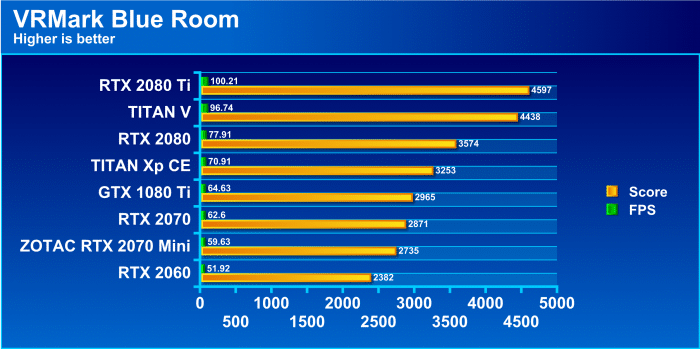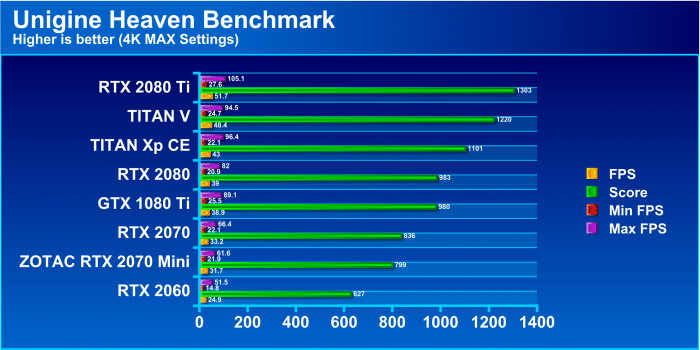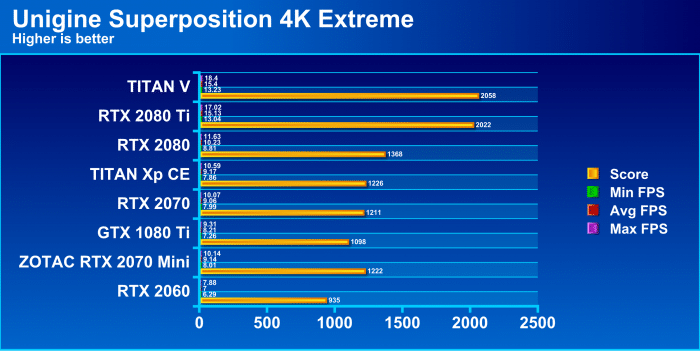3DMark Fitrestrike

3DMark Firestrike shows that the 2060 is quite capable and scales right behind the pack. This would put it right between the 1080/1070Ti performance level or close to.
3DMark Time Spy

Time Spy is the newest 3DMark entry being a DX12 variant. The 2060 falls in line behind the 2070 again and falls a bit more at the Extreme (4K) variant as this GPU is not really meant to be in 4K territory.
VRMark

VRMark has 3 levels, Easiest being Orange, then heavy being Cyan and insane mode being Blue.
Orange shows all cards at a dead heat with what I can only assume is a limitation of the benchmark as they all score right at each other throats.
Cyan is where you see the scaling come across and the RTX 2060 falls a little bit behind the 1080 Ti.
Blue, as I said, is “insane mode” with the RTX 2080 Ti being the closest I have ever seen a GPU get to reaching the 109FPS goal. The 2060 pulls in where we would expect it delivering solid performance but definitely trailing the more capable big brother in the RTX 2070.
Unigine Heaven 4.0 Pro

Heaven is a long time test ion our suite. It is from Unigine and pushes tessellation and some heavy GPU loading.
While Heaven may be aging, putting it at 4K still puts some hurt on the GPU and can give you a very good view of raw performance scaling. Here we see once again that the RTX 2060 is fighting outside its weight class at 4K. With that being said it still achieves an average of almost 25 FPS average.
Unigine Superposition Pro
Superposition is the newest benchmark from Unigine and is better aligned with testing the newer cards we are testing today.

Here with Unigine Superposition we see the RTX 2060 pull just a little short of the outgoing 1080 Ti at 4K. well actually the 1080 Ti has it beat by a small margin but overall seeing it encroach this far into its territory tells me a lot about how close to 1080 level performance the 2060 is.
 Bjorn3D.com Bjorn3d.com – Satisfying Your Daily Tech Cravings Since 1996
Bjorn3D.com Bjorn3d.com – Satisfying Your Daily Tech Cravings Since 1996
















